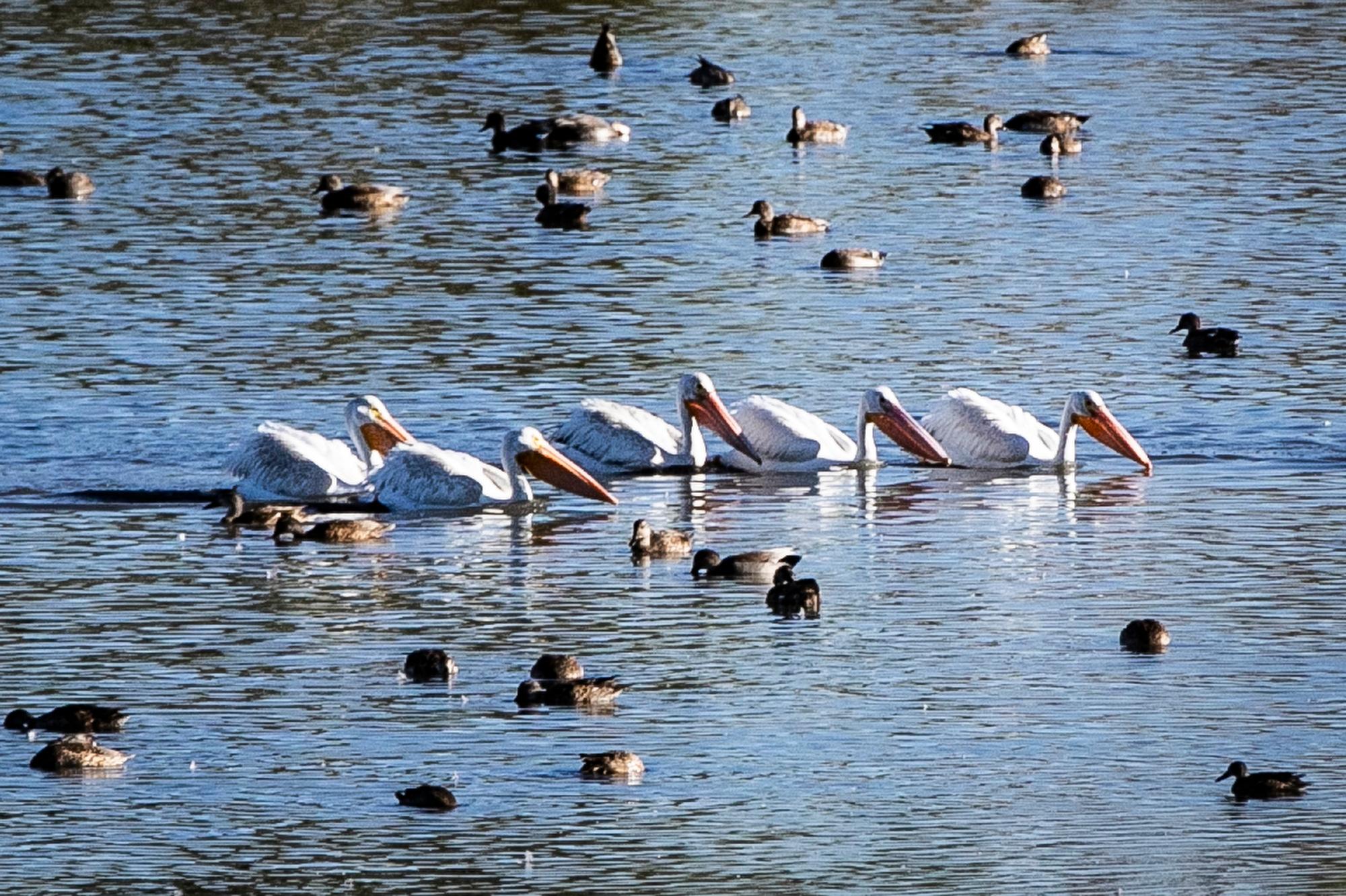
Each time Lousie Mahan drives across the Cherry Creek Dam in Arapahoe County, she sees something that she finds completely confusing. There, on the water and in the air, is often a squadron of pelicans — those large seafaring birds usually associated with salt water, rather than a freshwater reservoir.
“I thought pelicans lived on the Gulf Coast,” Mahan queried through Colorado Wonders, in which CPR News answers your questions about the state.
Pelicans do live on the Gulf Coast. But they also live inland, including in Colorado. Measuring up to six-feet-long and with a wingspan of almost 10 feet, the birds are the largest in the state and ingenious anglers, according to Ted Floyd, editor of Birding, the American Birding Association’s magazine and resident of Lafayette.
To help CPR answer Mahan’s question more thoroughly, Floyd invited me and Hart Van Denburg, CPR's visuals editor, to a spot one early morning in mid-September where we were almost guaranteed to see pelicans: the Rocky Mountain Arsenal National Wildlife Refuge just north of Denver. “It has water. And the key to finding pelicans is water,” he explained.
At roughly the size of Manhattan, the refuge has several lakes that make it a birder’s paradise. Over 280 species have been observed there, including the American White Pelican, which is one of two types of pelicans in the United States. Brown Pelicans prefer the beach life.
White Pelicans also live on the coasts. Even the ones soaring over Colorado may spend some of the year in warmer coaster climes. “Our pelicans are fair-weather birds. They get the heck out of Dodge or at least the heck out of Colorado.” Floyd said. The birds stay until the lakes freeze over and they can no longer fish.
As the sun helped peel off a blanket of morning mist from Lower Derby Lake, we meandered and waited. After about an hour, Floyd, equipped with a pair of binoculars, spotted a flock. “I see a whole bunch of pelicans out here!” he said.
A half dozen of the birds were engaged in cooperative feeding. “They're all mashed together and what they're doing is creating a super-pelican,” Floyd explained. “Their combined shadow fools the fish below into thinking they’re in relative safety.” With only six birds in the water on this particular morning, we witnessed a relatively calm affair. “When you get more than 25 pelicans [feeding], it's a scrum, it's mayhem.”
Before we headed back to our cars, Floyd shared one last piece of pelican magic with us. A limerick.
“An amazing bird is the pell-ee-can. His bill holds more than his belly can. He holds in his beak enough food for a week. And blamed if I know how the hell he can.”
Correction: This story has been updated with the correct the location of the Cherry Creek Dam. It is in Arapahoe County.









